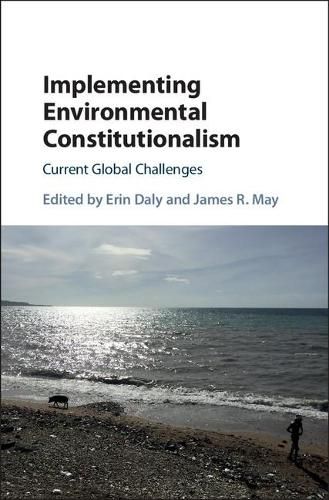Readings Newsletter
Become a Readings Member to make your shopping experience even easier.
Sign in or sign up for free!
You’re not far away from qualifying for FREE standard shipping within Australia
You’ve qualified for FREE standard shipping within Australia
The cart is loading…






Constitutions can play a central role in responding to environmental challenges, such as pollution, biodiversity loss, lack of drinking water, and climate change. The vast majority of people on earth live under constitutional systems that protect the environment or recognize environmental rights. Such environmental constitutionalism, however, falls short without effective implementation by policymakers, advocates and jurists. Implementing Environmental Constitutionalism: Current Global Challenges explains and explores this ‘implementation gap’. This collection is both broad and deep. While some of the essays analyze crosscutting themes, such as climate change and the need for rule of law that affect the implementation of environmental constitutionalism throughout the world, others delve deeply into geographically contextual experiences for lessons about how constitutional environmental law might be more effectively implemented. This volume informs global conversations about whether and how environmental constitutionalism can be made more effective to protect the natural environment.
$9.00 standard shipping within Australia
FREE standard shipping within Australia for orders over $100.00
Express & International shipping calculated at checkout
Stock availability can be subject to change without notice. We recommend calling the shop or contacting our online team to check availability of low stock items. Please see our Shopping Online page for more details.
Constitutions can play a central role in responding to environmental challenges, such as pollution, biodiversity loss, lack of drinking water, and climate change. The vast majority of people on earth live under constitutional systems that protect the environment or recognize environmental rights. Such environmental constitutionalism, however, falls short without effective implementation by policymakers, advocates and jurists. Implementing Environmental Constitutionalism: Current Global Challenges explains and explores this ‘implementation gap’. This collection is both broad and deep. While some of the essays analyze crosscutting themes, such as climate change and the need for rule of law that affect the implementation of environmental constitutionalism throughout the world, others delve deeply into geographically contextual experiences for lessons about how constitutional environmental law might be more effectively implemented. This volume informs global conversations about whether and how environmental constitutionalism can be made more effective to protect the natural environment.